Grow Strawberries at Home Easily – imagine plucking juicy, sun-ripened strawberries straight from your own garden! For centuries, cultivating strawberries has been a cherished tradition, dating back to ancient Rome where they were prized for their medicinal properties and delightful flavor. Today, the joy of growing your own food, especially something as delicious as strawberries, is more relevant than ever.
But let’s be honest, the thought of starting a garden can be daunting. Where do you even begin? That’s where these simple DIY tricks and hacks come in! I’m here to show you that you don’t need a sprawling farm to enjoy the sweet taste of homegrown berries. Whether you have a sprawling backyard or just a sunny balcony, I’ll guide you through easy and effective methods to grow strawberries at home easily, even if you’re a complete beginner.
This article is packed with practical tips and step-by-step instructions to help you overcome common challenges and maximize your strawberry harvest. From choosing the right variety to creating the perfect growing environment, I’ll share my secrets to ensure you’re enjoying a bountiful crop of fresh, flavorful strawberries in no time. So, grab your gardening gloves, and let’s get started!
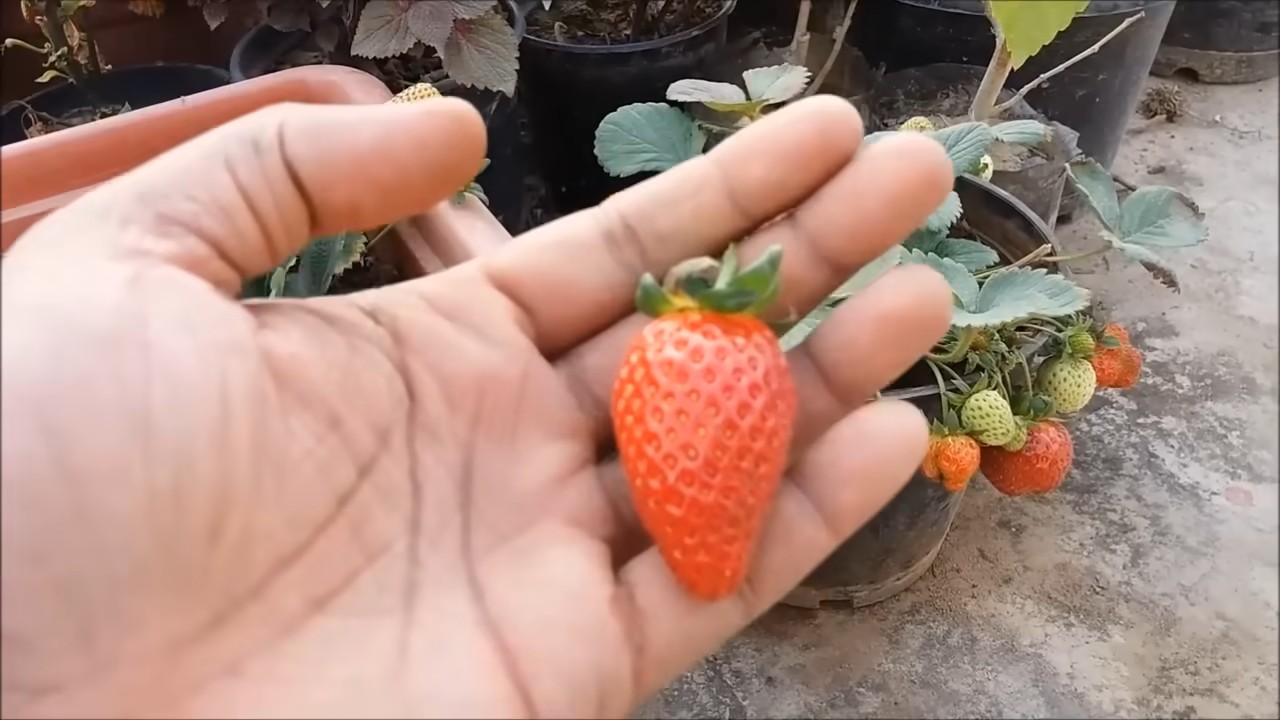
Grow Strawberries at Home: A Beginner’s Guide
Hey there, fellow gardening enthusiasts! Ever dreamt of plucking juicy, red strawberries straight from your own garden? Well, dream no more! Growing strawberries at home is surprisingly easy, even if you don’t have a sprawling backyard. I’m going to walk you through everything you need to know to get started, from choosing the right variety to harvesting your delicious bounty. Let’s get our hands dirty!
Choosing Your Strawberry Variety
First things first, you need to decide which type of strawberry you want to grow. There are three main types, and each has its own unique characteristics:
* June-Bearing Strawberries: These produce one large crop of strawberries in the spring, typically around June (hence the name!). They’re great if you want a big harvest all at once for making jam or freezing. Popular varieties include ‘Earliglow’, ‘Honeoye’, and ‘Chandler’.
* Everbearing Strawberries: Don’t let the name fool you – they don’t produce fruit continuously. Instead, they produce two or three crops throughout the growing season: one in the spring, one in the late summer/early fall, and sometimes a smaller crop in between. ‘Ozark Beauty’, ‘Seascape’, and ‘Albion’ are some reliable everbearing varieties.
* Day-Neutral Strawberries: These are the most consistent producers, yielding fruit throughout the growing season as long as the temperature is between 35°F and 85°F. They’re less sensitive to day length than the other two types. ‘Tristar’, ‘Tribute’, and ‘San Andreas’ are excellent choices.
My Recommendation: If you’re a beginner, I’d suggest starting with everbearing or day-neutral varieties. They’re more forgiving and will give you a longer harvest period, which is super rewarding!
Preparing Your Strawberry Patch
Strawberries need a sunny spot and well-drained soil to thrive. Here’s how to get your planting area ready:
* Sunlight: Strawberries need at least 6-8 hours of direct sunlight per day. Choose a location that gets plenty of sunshine.
* Soil: Strawberries prefer slightly acidic soil with a pH between 5.5 and 6.8. If you’re not sure about your soil pH, you can get a soil testing kit from your local garden center.
* Drainage: Good drainage is crucial. Strawberries hate having wet feet! If your soil is heavy clay, amend it with plenty of compost, peat moss, or other organic matter to improve drainage.
* Weed Control: Clear the area of all weeds and grass. Strawberries don’t compete well with weeds, so it’s important to start with a clean slate.
Planting Your Strawberries
Now for the fun part – planting! You can buy strawberry plants as bare-root plants or as potted plants. Bare-root plants are typically cheaper, but potted plants are easier to establish.
Planting Bare-Root Strawberries:
1. Soak the Roots: Before planting, soak the bare roots in water for about an hour. This will help rehydrate them.
2. Dig a Hole: Dig a hole that’s wide and deep enough to accommodate the roots without crowding them.
3. Mound the Soil: Create a small mound of soil in the center of the hole.
4. Position the Plant: Place the strawberry plant on top of the mound, spreading the roots out around it. The crown (the point where the roots meet the stem) should be level with the soil surface. This is super important! Planting the crown too deep can cause the plant to rot.
5. Backfill and Water: Backfill the hole with soil, gently firming it around the roots. Water thoroughly.
6. Space Plants: Space June-bearing strawberries about 18-24 inches apart in rows that are 3-4 feet apart. Everbearing and day-neutral strawberries can be planted closer together, about 12 inches apart.
Planting Potted Strawberries:
1. Gently Remove the Plant: Gently remove the strawberry plant from its pot, being careful not to damage the roots.
2. Loosen the Roots: If the roots are tightly bound, gently loosen them with your fingers.
3. Dig a Hole: Dig a hole that’s slightly larger than the pot.
4. Position the Plant: Place the strawberry plant in the hole, making sure the top of the root ball is level with the soil surface.
5. Backfill and Water: Backfill the hole with soil, gently firming it around the roots. Water thoroughly.
6. Space Plants: Follow the same spacing guidelines as for bare-root plants.
Caring for Your Strawberry Plants
Once your strawberries are planted, it’s important to provide them with the care they need to thrive.
* Watering: Water your strawberry plants regularly, especially during dry periods. Aim to keep the soil consistently moist, but not waterlogged. Drip irrigation is a great way to water strawberries, as it delivers water directly to the roots and helps prevent fungal diseases.
* Fertilizing: Fertilize your strawberry plants in the spring with a balanced fertilizer, such as 10-10-10. Follow the instructions on the fertilizer package. Avoid over-fertilizing, as this can lead to excessive foliage growth and fewer berries.
* Mulching: Mulch around your strawberry plants with straw, pine needles, or wood chips. Mulch helps to retain moisture, suppress weeds, and keep the berries clean.
* Weed Control: Keep your strawberry patch free of weeds. Hand-pull weeds regularly, or use a hoe to cultivate the soil around the plants.
* Pest and Disease Control: Strawberries can be susceptible to various pests and diseases, such as slugs, snails, spider mites, and fungal diseases. Inspect your plants regularly for signs of problems. If you notice any pests or diseases, take action promptly. There are many organic and chemical control options available.
* Removing Runners: June-bearing strawberries produce runners, which are long stems that grow out from the main plant and develop new plantlets at the end. If you want to maximize your berry production, remove the runners as they appear. Everbearing and day-neutral strawberries also produce runners, but you can leave them on if you want to propagate new plants.
Protecting Your Strawberries
Birds and other critters love strawberries just as much as we do! Here are some ways to protect your precious berries:
* Netting: Cover your strawberry plants with bird netting to keep birds from eating the berries.
* Row Covers: Use row covers to protect your plants from frost, insects, and other pests.
* Slugs and Snails: Use slug and snail bait or traps to control these pests. You can also hand-pick them off the plants at night.
* Raised Beds: Growing strawberries in raised beds can help to deter some pests and make it easier to control weeds.
Harvesting Your Strawberries
The moment you’ve been waiting for – harvesting your strawberries!
* When to Harvest: Strawberries are ready to harvest when they are fully red and slightly soft to the touch. They should also detach easily from the plant.
* How to Harvest: Gently grasp the strawberry near the stem and twist it off the plant. Avoid pulling on the berry, as this can damage the plant.
* Harvest Regularly: Harvest your strawberries every few days, as they ripen quickly.
* Enjoy Your Harvest: Eat your strawberries fresh, or use them to make jam, pies, smoothies, or other delicious treats!
Extending the Strawberry Season
Want to enjoy strawberries for even longer? Here are a few tips:
* Succession Planting: Plant different varieties of strawberries that ripen at different times. This will help to extend your harvest season.
* Cold Frames: Use cold frames to protect your strawberry plants from frost in the spring and fall. This can help to extend the growing season.
* High Tunnels: Growing strawberries in high tunnels can provide even greater protection from the elements and allow you to harvest strawberries for a longer period of time.
Growing Strawberries in Containers
Don’t have a garden? No problem! You can easily grow strawberries in containers.
* Choose the Right Container: Select a container that’s at least 12 inches in diameter and 8 inches deep. Make sure the container has drainage holes.
* Use a Good Potting Mix: Use a high-quality potting mix that’s well-draining.
* Planting: Plant your strawberry plants in the container, following the same guidelines as for planting in the ground.
* Watering and Fertilizing: Water and fertilize your container-grown strawberries regularly. They will dry out more quickly than plants in the ground, so check the soil
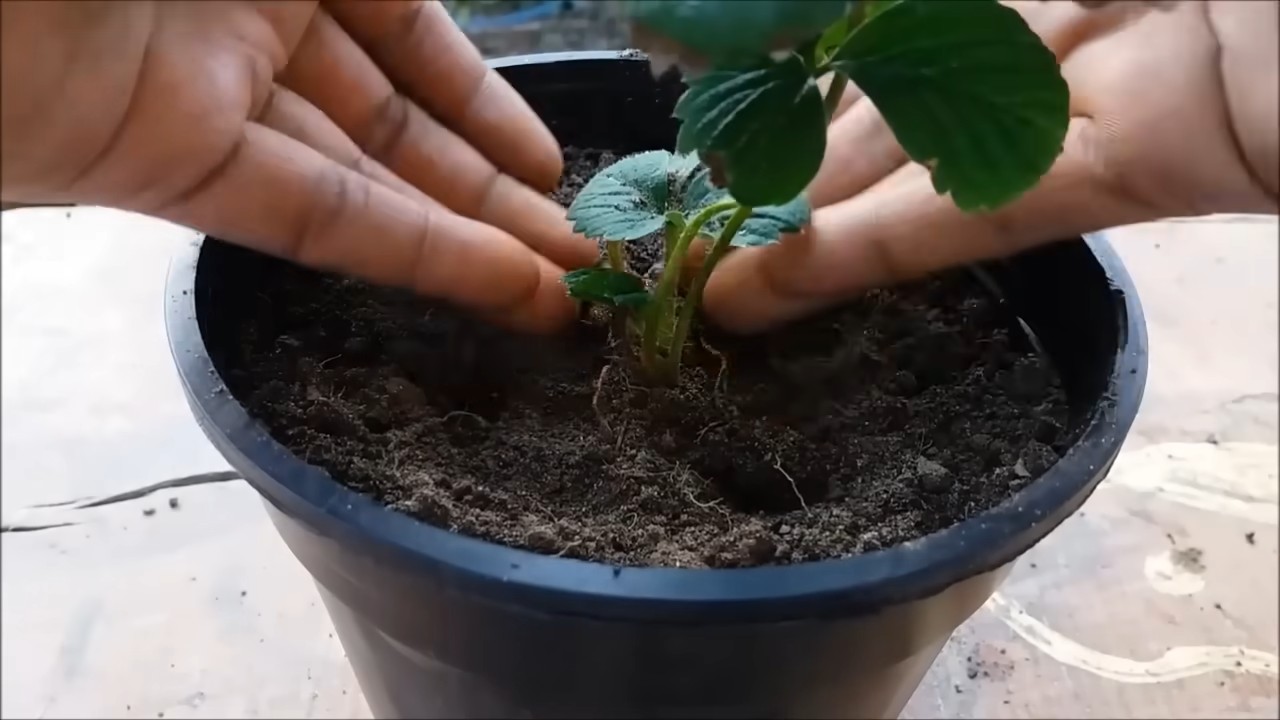
Conclusion
So, there you have it! Growing strawberries at home easily isn’t just a pipe dream; it’s a tangible reality within your reach. We’ve walked you through a simple, effective DIY trick that bypasses the complexities often associated with strawberry cultivation. Forget expensive gardening equipment or acres of land. This method is all about maximizing space, minimizing effort, and reaping a bountiful harvest of sweet, juicy strawberries right from your own home.
Why is this DIY trick a must-try? Because it offers a trifecta of benefits: convenience, cost-effectiveness, and control. Imagine stepping outside your door and plucking perfectly ripe strawberries whenever the craving hits. Think of the money you’ll save by reducing your reliance on store-bought berries, which can often be pricey and lack the intense flavor of homegrown fruit. And consider the satisfaction of knowing exactly what went into growing your food – no harmful pesticides or questionable practices. You are in complete control of the process, ensuring the healthiest and most delicious strawberries possible.
But the beauty of this method lies not only in its simplicity but also in its adaptability. Feel free to experiment with different varieties of strawberries to discover your personal favorites. Everbearing varieties will provide a continuous harvest throughout the growing season, while June-bearing varieties offer a larger, more concentrated yield. You can also play around with different container types, from hanging baskets to stacked planters, to create a visually stunning and productive strawberry garden.
Consider adding companion plants like basil or thyme to your strawberry containers. These herbs not only enhance the flavor of your strawberries but also help to deter pests naturally. Another variation is to use different types of growing mediums. While we recommended a well-draining potting mix, you could also explore using coco coir or a blend of compost and perlite. Each medium offers unique benefits in terms of water retention and nutrient availability.
Don’t be afraid to get creative and personalize your strawberry-growing experience. The most important thing is to start! This DIY trick is designed to be accessible to everyone, regardless of their gardening experience. With a little bit of effort and attention, you’ll be enjoying the sweet taste of homegrown strawberries in no time.
We are confident that this method will transform the way you think about growing strawberries. It’s a game-changer for urban gardeners, apartment dwellers, and anyone who wants to enjoy the freshest, most flavorful strawberries without the hassle.
So, what are you waiting for? Gather your supplies, follow our simple steps, and embark on your strawberry-growing adventure today! We can’t wait to hear about your success. Share your experiences, photos, and tips in the comments below. Let’s create a community of strawberry enthusiasts and inspire others to discover the joy of growing their own food. Let us know what worked best for you, what challenges you faced, and any innovative solutions you came up with. Your feedback is invaluable and will help us refine and improve this DIY trick for future generations of strawberry growers. Happy growing!
Frequently Asked Questions (FAQs)
What type of strawberries are best for growing in containers?
The best type of strawberries for container gardening are everbearing and day-neutral varieties. Everbearing strawberries produce fruit throughout the growing season, offering a continuous harvest. Day-neutral strawberries are less sensitive to day length and will also produce fruit over a longer period. June-bearing strawberries, while producing a larger crop, typically only fruit for a few weeks in June, making them less ideal for continuous harvesting in containers. Some popular varieties include Albion, Seascape, and Ozark Beauty. Research the specific needs of each variety to ensure optimal growth in your climate.
How often should I water my container strawberries?
Watering frequency depends on several factors, including the weather, the type of container, and the growing medium. Generally, you should water your strawberry plants when the top inch of soil feels dry to the touch. During hot, dry weather, you may need to water them daily. Avoid overwatering, as this can lead to root rot. Ensure your containers have adequate drainage to prevent water from pooling at the bottom. A good rule of thumb is to water deeply until you see water draining from the bottom of the container.
What kind of fertilizer do strawberries need?
Strawberries are heavy feeders and require regular fertilization to produce abundant fruit. Use a balanced fertilizer with an NPK ratio of 10-10-10 or 12-12-12. Apply fertilizer every 2-4 weeks during the growing season. You can also use organic fertilizers such as compost tea or fish emulsion. Avoid over-fertilizing, as this can burn the roots and damage the plants. Always follow the instructions on the fertilizer packaging. Consider a soil test to determine the specific nutrient needs of your soil.
How much sunlight do strawberries need?
Strawberries need at least 6-8 hours of direct sunlight per day to thrive. Choose a location that receives plenty of sunlight throughout the day. If you live in a hot climate, provide some afternoon shade to prevent the plants from overheating. Insufficient sunlight can result in smaller fruit and reduced yields. If you are growing strawberries indoors, use grow lights to supplement natural sunlight.
How do I protect my strawberries from pests and diseases?
Several pests and diseases can affect strawberry plants, including aphids, spider mites, slugs, and fungal diseases. Regularly inspect your plants for signs of infestation or disease. Remove any affected leaves or fruit. Use organic pest control methods such as insecticidal soap or neem oil to control pests. Ensure good air circulation around the plants to prevent fungal diseases. Consider using row covers to protect your plants from birds and other animals.
How do I overwinter my strawberry plants in containers?
In colder climates, strawberry plants in containers need protection during the winter months. Move the containers to a sheltered location, such as a garage or shed, or bury them in the ground. Water the plants occasionally to prevent the soil from drying out completely. Mulch around the plants with straw or leaves to provide insulation. In milder climates, you may be able to leave the containers outdoors, but still provide some protection from frost.
Can I grow strawberries from seed?
While it is possible to grow strawberries from seed, it is a more challenging and time-consuming process than starting with bare-root plants or runners. Strawberry seeds require a period of cold stratification before they will germinate. Sow the seeds indoors 8-10 weeks before the last expected frost. Keep the soil moist and provide plenty of light. Once the seedlings are large enough to handle, transplant them into individual pots. Harden them off before planting them outdoors.
How long does it take for strawberries to produce fruit?
The time it takes for strawberries to produce fruit depends on the variety and the growing conditions. Everbearing and day-neutral varieties typically produce fruit within a few months of planting. June-bearing varieties will produce fruit the following year. Be patient and provide your plants with the care they need to thrive.
What are runners, and how do I use them?
Runners are long, slender stems that strawberry plants produce to propagate themselves. These runners will develop roots and form new plants. You can use these runners to create new strawberry plants. Simply pin the runner to the soil in a separate pot and allow it to root. Once the new plant has established itself, you can cut the runner from the mother plant.
How do I know when strawberries are ripe?
Strawberries are ripe when they are fully red and slightly soft to the touch. The berries should also detach easily from the plant. Taste a few berries to ensure they are sweet and flavorful. Pick the berries in the morning when they are cool and dry. Avoid picking them when they are wet, as this can lead to spoilage.

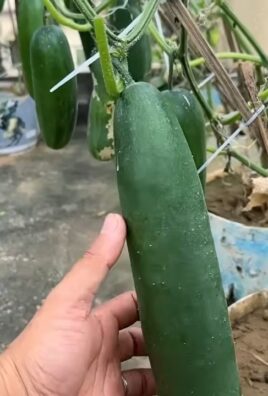
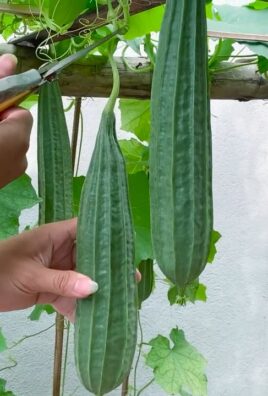
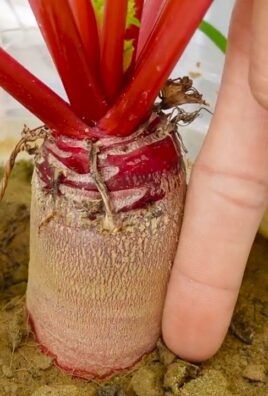
Leave a Comment